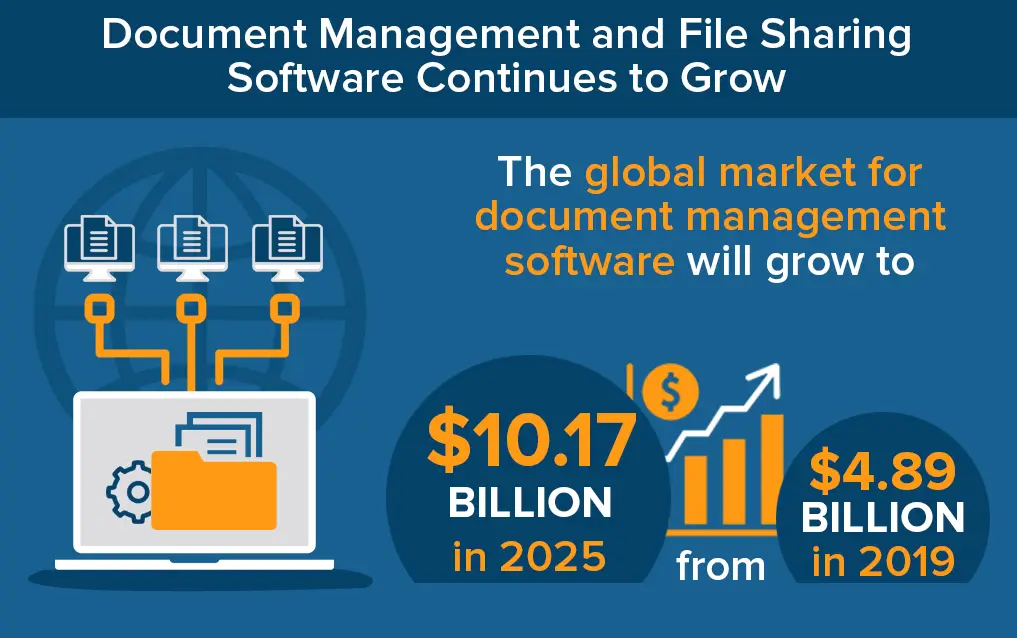What is a Digital Document Management System? A Complete Guide for 2025

Technology has become a central part of people’s lives, so organizing documents is not a luxury but a necessity in today’s society. Think about a system where one can search for, share, and manage documents using their mouse and keyboard and where these documents are secure and productive.
Welcome to the future of work: Digital Document Management System (DDMS).
It eliminates conventional paper-based systems and disparate folders by centralizing documents with cloud-based solutions, whereby business processes such as workflows and real-time collaboration tools come into the picture.
They no longer need to waste their time searching through mountains of file folders or trying to untangle documents buried in email inboxes. Just think of the time that could be saved, the productivity increase, and the lack of headaches that would dissolve as soon as efficiency and security become the core of a system. Immerse yourself in a digital document management system and learn how it can foster a new way of managing documents and information, starting with a click in this detailed blog.
What is a Digital Document Management System?
A digital document management system (DDMS) is like a centralized platform or solution where you can store and share your documents.
- But thanks to DMS, companies can handle sorting through a never-ending stack of document folders.
- You can easily manage, organize, and recover your data with just one piece of software.
- DMS increases productivity by streamlining most of your documentation labour.
In addition, DMS tracks all document modifications and offers a smooth collaborative flow. Additionally, having a solid documentation management system can benefit many businesses. In addition, it streamlines processes, conserves time and money, and protects essential data from illegal access.
According to Nitro’s 2022 Productivity Report, 50% of respondents admitted using fewer physical documents and paper-based procedures since the pandemic began.
In addition to making storage, management, and retrieval more accessible, digital document management systems allow paper documents to be scanned and indexed before being saved in an electronic format. Documents formerly kept on paper are checked as part of the shift to fully digital document management, allowing them to be saved as digital files like PDFs.
Will Paper Storage Ever Be Obsolete?

(Source: Financesonline.com)
From the above pictorial view, we can admit that the digital document storage market is booming and all set to replace paper-based storage.
The increase in the use of digital technology in organizations and businesses means that file storage in papers can soon become irrelevant. These changes have made the storage of data electronically relatively convenient, thereby overcoming some of the drawbacks associated with the use of paper-based records.
Digital storage saves a lot of space required for physical papers and provides simple ways to access, secure, and even search the data. With new technologies and advancements in digital technology development, going paperless regarding documentation is the next big step forward.
Benefits Of Using A Digital Document Management System
When working in a fast-paced environment, it is vital to facilitate document processing; this is where DDMS comes in handy. When documents are digitized and stored in a central repository, effective communication can be achieved across organizations remarkably.
Take a look at other benefits that DDMS offers to businesses:
Improved Accessibility
- In an organization with a DDMS, the documents are kept in a central place over the Internet. Thus, users need to have a strong internet connection.
- It saves the physical space to store and supports working from home by having close access to vital information.
Enhanced Security
- Digital systems typically incorporate security measures like data encryption, user authentication, and data access restrictions.
- This helps prevent unauthorized access to the system and protects the data from potential breaches per the set data protection standards.
Improved Efficiency
- Relieving time-consuming tasks, DDMS offers automated features for organizations and reduced working hours allocated for searching papers and important documents.
- This makes it possible to complete more decision-making processes, resulting in more efficient time utilization for essential tasks.
Better Collaboration
- DDMS platforms are, therefore, capable of real-time work since the systems enable more than one person to work on a document and implement changes in real time.
- This enhances teamwork in that each team member is fully informed and working with the correct version of a particular document, thus avoiding miscommunication and other mistakes.
Cost Savings
- Logging allows for discarding paper filing systems such as filing cabinets and papers likely to accumulate over time.
- Also, it reduces the time used to search for a particular document, print, and distribute, saving a lot of cash over time.
Also Read: What is the Average Cost of Custom Software Development?
How Does Digital Document Management System Work?
The six primary functions of a document management system are to be performed. Here’s the breakdown of each step to help you understand the process better.
Document Capture
- Document capture is the first step of a DDMS, where originals of documents or files are converted into digital format (for instance, JPG, PNG, or PDF).
- Such activities may entail using a scanner to scan paper documents, OCR to digitize text, or importing documents from electronic sources.
- This ensures that digital copies of the documents can be indexed, stored, and managed conveniently.
Central Document Storage
- When captured, books and other forms of print media are saved in archives.
- It involves the systematic storage of files, where the storage space is partitioned and indexed using data about the stored data, known as metadata.
- When documents are stored centrally, they can be easily accessed and retrieved; hence, there are minimal cases of duplicate papers that can not be lost or misplaced easily.
Document Distribution
- Document distribution occurs via transferring digital files to the right users or systems.
- With the help of DDMS, document sharing and distribution is possible through links, media, emails, or various integrated applications.
- This integrated distribution also accelerates the exchange speed and effectively guarantees that the proper parties receive precise information at the right time.
Access Control
- Through permission and roles, a DDMS can prevent individuals from accessing essential and private information or even allow certain users with limited capabilities.
- This improves security and will not allow intruders or anyone to gain access to personal or confidential information.
Collaboration
- Most modern DDMS platforms allow for shared editing where multiple users can simultaneously work on a single document.
- The ability to edit and contribute to others’ work in real-time, leave comments and manage changes collectively optimize collaboration and updates.
- It makes us work together and coordinate well so that everybody understands the work to be done.
Compliance and Auditing
- A DMS enables the organization to meet regulatory compliance by tracking document access and changes.
- Auditing features record user patterns with documents, creating an audit strategy that can be later checked to ensure adherence to policies and regulations.
- This feature is essential for industries with strict compliance standards and helps manage and mitigate regulatory risks.
Types Of Digital Document Management System
Indeed, the functions of a digital document management system are simple; there is a wide range of software products under the roof of DDMS. Let’s have a look at the different types of online document management systems:
Content Management System (CMS)
To understand it deeply, a content management system is more suitable than other types of DDMS because it can manage content in any file. Moreover, the friendly interface makes it extremely easy to organize content without sound technical knowledge.
Some popular content management systems are WordPress, Joomla, and Drupal.
Enterprise Document Management System
Large organizations are the target market for EDMS. Thanks to EDMS, numerous departments within a business can handle a significant volume of papers. Furthermore, an EDMS provides advanced functionalities like document capture, indexing, workflow automation, document storage, and retrieval.
The majority of industries using EDMS include finance, government, and healthcare.
For organizations seeking a custom solution that aligns with their unique business needs, exploring a custom software development approach might be the best route. To learn more about how custom software can elevate your document management strategy, visit our custom software development guide.
Document Imaging System
This is another excellent option to make the organization paperless and the office environment more digital. This system includes scanning devices and support printers. With the help of this system, businesses or individuals can scan documents, convert them into text formats, and save them as JPEGs or PDFs.
The finance and healthcare sectors highly use this type of system.
Workflow Management System
A workflow management system is used if a business wants to boost productivity, reduce errors, and improve efficiency.
For instance, a warehouse department might require a production team leader’s approval before processing large orders. Along with manufacturing and logistics, this type of system is also used in the sales department, making it easy for businesses to reduce bottlenecks.
Records Management System
These systems, typically cloud-based, let users save documents and make them easily accessible to those who need them. These solutions are frequently adaptable to businesses’ demands.
For all kinds of companies, there are many storage options available; nevertheless, there are extra factors to consider while storing government, medical, and legal information. Whether it’s FINRA, HIPAA, Sarbanes-Oxley, or another agency, the security specifications of your data storage system must be appropriate for your sector.
HR Document Management System
HR document management software (DMS) is a system that makes it easier for a business to gather, store, and handle essential employee documents. These offer electronic filing systems for storing crucial HR records, HR DMSs with OCR search capabilities for simple document retrieval, various role-based security options, and support for compliance at all levels.
Difference Between EDMS and DDMS
EDMS and DDMS are essential tools for organizing and managing documents and data within organizations. Despite looking the same, both are different in specific ways and offer various features tailored to multiple needs.
| Feature | EDMS (Electronic Document Management System) | DDMS (Digital Document Management System) |
|---|---|---|
| Primary Focus | Document management, including storage, organizing and archiving | Both document and data management, including raw data management |
| Basic Functionality | Manages electronic documents and supports version control | Integrates document management with data management functions |
| Data Management | Limited to documents and their metadata | Can be able to handle massive chunks of data types, including spreadsheets |
| Search | It comes with an advanced search facility | Improved search across both documents and sources |
| Integration | It can be integrated with other systems | It can be integrated with unique systems, including repositories |
| User Interface | Concentrates on document-centric workflows | Offers standard interfaces for both documents and data management |
| Security Threats | Pay attention to secure access to documents and version control | Proper security features for both documents and data |
A Quick Recap
Digital document management systems are essential for modern organizations to organize, store, and manage their data effectively.
Organizations must satisfy today’s compliance standards for sensitive information by meeting the demands of successfully using unprecedented volumes of data while ensuring it is secure.
Consider putting a document management system in place if your business still handles paperwork through paper-based procedures and needs to modernize. This will help your operations by enhancing productivity, efficiency, and client relations.
Frequently Asked Questions
Document management systems store, organize, manage, and track digital documents such as images, videos, audio, scanned documents, and PDFs.
DDMS software offers an extensive range of collaboration tools for the workforce to share and manage files while automating the document approval process.
Sure. Document management software has integration capabilities that make data and information flow smoothly across all the stakeholders.


















